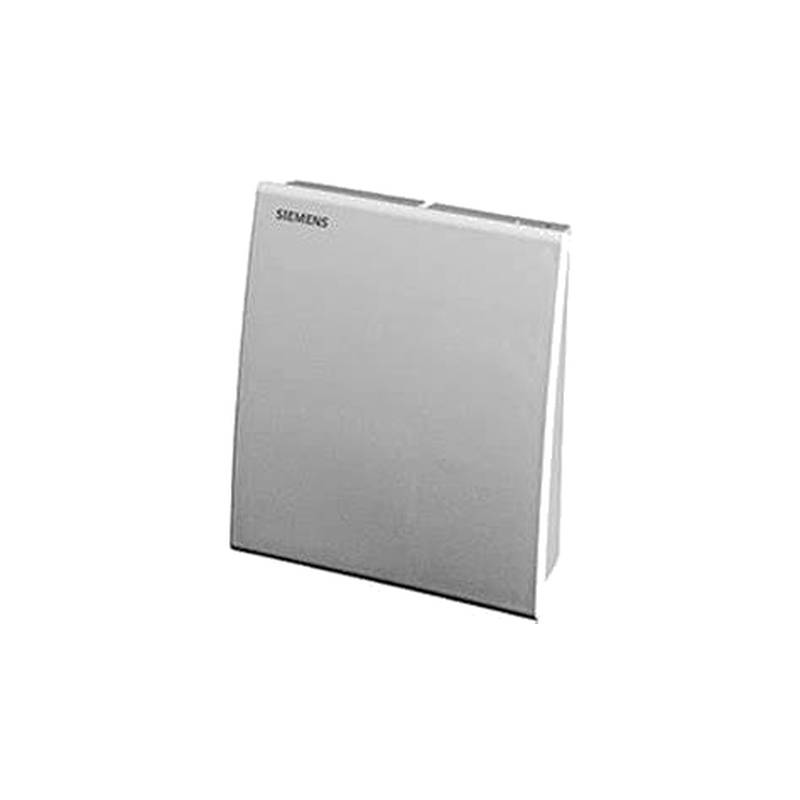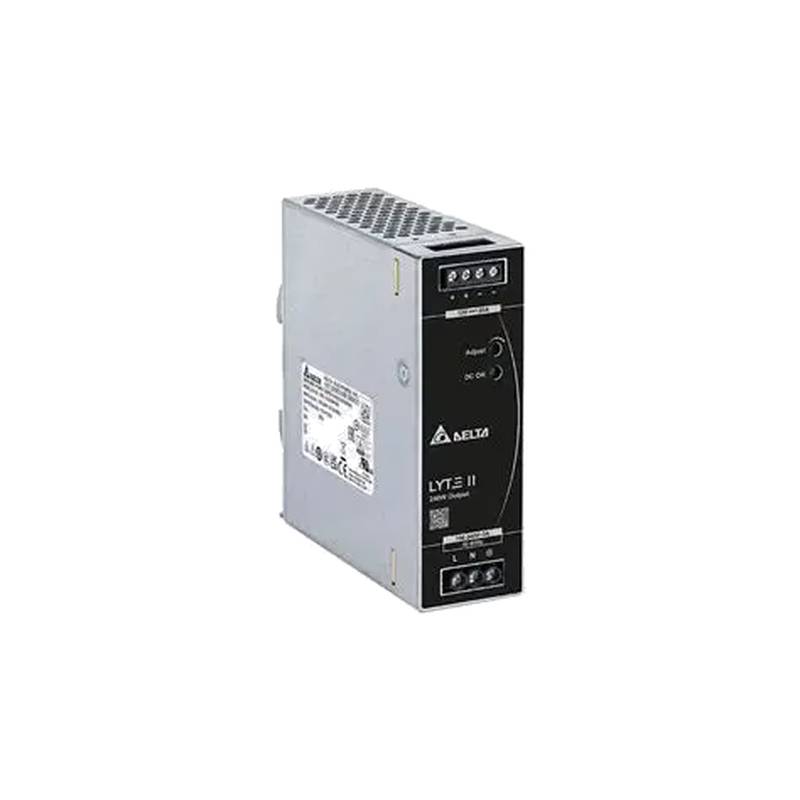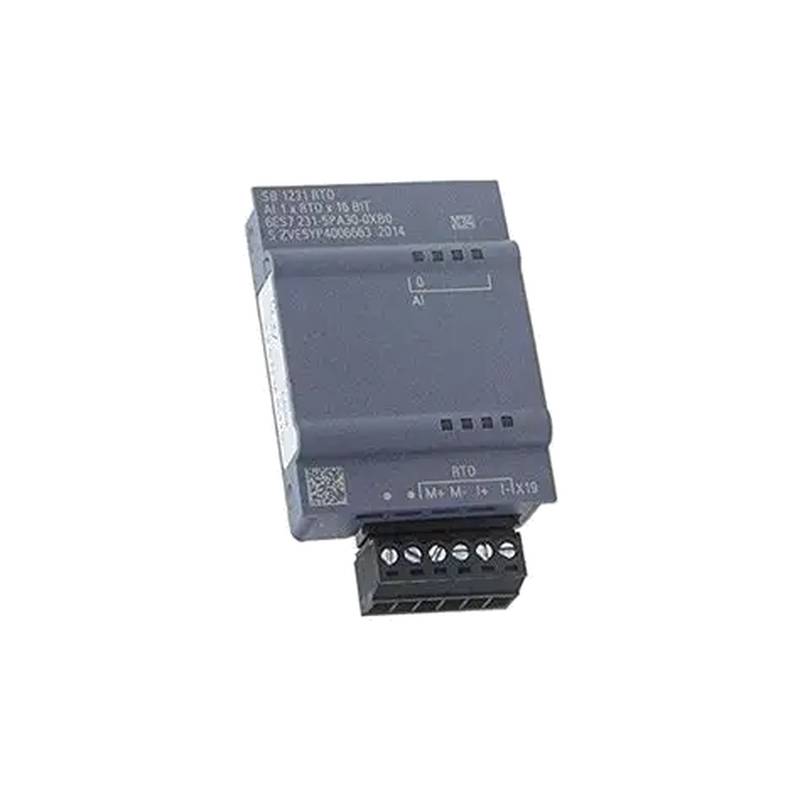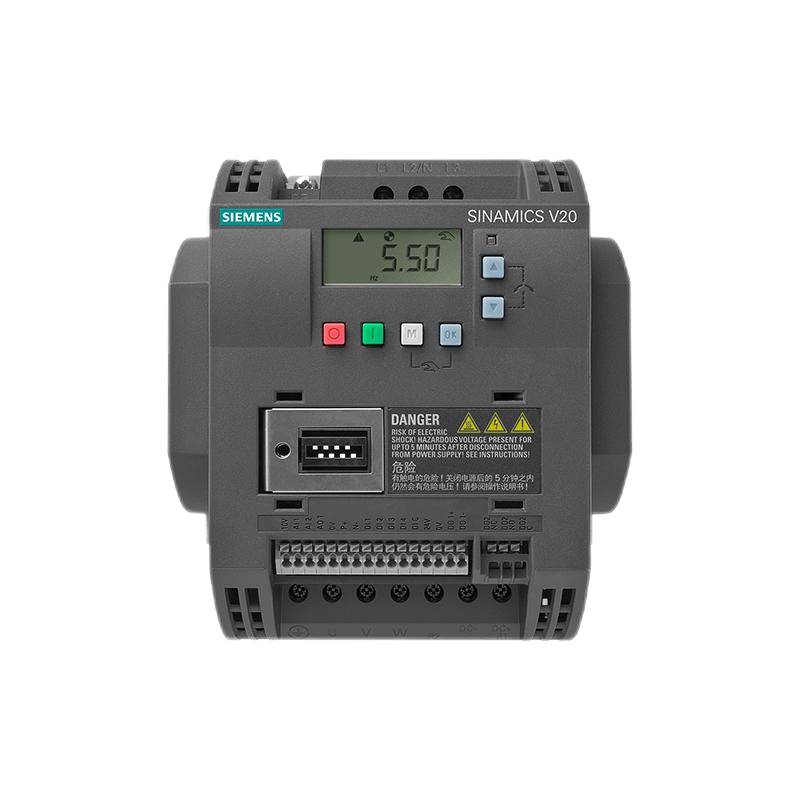
The Delta VFD9A0MS43ANSAA MS300 Drive is a robust variable frequency drive engineered for precise fan and pump speed control in demanding industrial environments. This 9.0A, 3.7kW (5HP) unit offers significant advantages, including superior energy efficiency, enhanced system performance, and extended equipment lifespan. Its core features encompass advanced sensorless vector control, built-in braking chopper, and a comprehensive suite of protection functions. With a compact design and flexible communication options, the MS300 series seamlessly integrates into various automation architectures, making it an ideal choice for HVAC, water treatment, and general industrial applications requiring reliable variable speed operation.
Product Specifications
| Feature | Specification |
| :--------------------- | :-------------------------------------------------- |
| Model Number | VFD9A0MS43ANSAA |
| Series | MS300 |
| Output Current (Max) | 9.0A |
| Output Power (kW) | 3.7kW |
| Output Power (HP) | 5HP |
| Input Voltage | 3 Phase, 380-480V AC |
| Output Frequency | 0 to 599 Hz |
| Control Method | Sensorless Vector Control, V/f Control |
| Braking Chopper | Built-in |
| Protection Functions | Overcurrent, Overvoltage, Undervoltage, Overload, Overheat, etc. |
| Communication Options | Modbus RS-485 (standard), Optional modules available |
| Operating Temperature | -20°C to 50°C |
| Dimensions (H x W x D) | 182mm x 146mm x 157mm |
| Enclosure Rating | IP20 |
Core Features & Market Positioning
The Delta VFD9A0MS43ANSAA MS300 drive distinguishes itself through its advanced sensorless vector control algorithm, which provides exceptional torque accuracy and dynamic response without requiring motor encoder feedback. This technology significantly simplifies installation and reduces overall system cost, positioning it as a highly competitive solution for applications where precise speed regulation is critical, such as variable torque loads in fan and pump systems. Furthermore, the integrated braking chopper enhances braking performance and system safety by dissipating regenerative energy effectively, a feature often found in higher-tier drives. The MS300 series is recognized for its robust build quality and reliability, making it a favored choice for users seeking a durable and dependable variable speed drive solution.
Key Application Scenarios
The Delta VFD9A0MS43ANSAA MS300 drive is exceptionally well-suited for variable torque applications, particularly in the HVAC and water management sectors. Its efficiency in controlling fan speeds for air handling units, ventilation systems, and chiller applications leads to substantial energy savings. In water treatment plants and municipal water supply systems, the drive optimizes pump operation, ensuring precise flow and pressure control while minimizing energy consumption and wear on pump components. Beyond these primary areas, the MS300 drive is also deployed in various general industrial machinery, including conveyors, extruders, and mixers, where variable speed control is essential for process optimization and product quality.
Practical System Integration Guidance
Integrating the Delta VFD9A0MS43ANSAA MS300 drive into an existing system is streamlined due to its user-friendly design and comprehensive documentation. Proper wiring is paramount; ensure the input power supply is correctly connected to the L1, L2, and L3 terminals, and the motor leads (U, V, W) are securely connected to the corresponding output terminals. For motor connections, it is advised to use shielded motor cable to minimize electromagnetic interference (EMI), especially in environments with other sensitive electronic equipment. Initial commissioning typically involves parameter configuration through the drive's keypad or via communication software. Key parameters to set include motor nameplate data, desired control mode (e.g., sensorless vector), acceleration/deceleration times, and any specific application requirements like speed limits or PID control settings. The built-in Modbus RS-485 communication port facilitates seamless integration into SCADA systems or PLC networks for remote monitoring and control.
Operation and Risk Mitigation
Safe operation of the Delta VFD9A0MS43ANSAA MS300 drive necessitates adherence to electrical safety standards and the drive's operational guidelines. Always ensure the drive is properly grounded and that all power sources are de-energized before performing any wiring or maintenance. The drive features numerous protection mechanisms to prevent damage to itself and the connected motor. Critical fault codes, such as "OC" (Overcurrent), "OV" (Overvoltage), "UV" (Undervoltage), and "OH" (Overheat), indicate specific operational anomalies that require immediate attention and troubleshooting as per the user manual. For instance, an "OC" fault might suggest a motor overload, incorrect acceleration settings, or a short circuit, while an "OH" fault points to inadequate cooling or ambient temperature issues. Implementing proper ventilation around the drive is crucial to prevent overheating and ensure reliable, long-term operation.
Scalability & Long-Term Value
The Delta VFD9A0MS43ANSAA MS300 drive offers significant long-term value through its compatibility with Delta's broader automation ecosystem and its support for industrial communication standards. Its modular design allows for the addition of optional communication cards, enabling integration with various fieldbuses like EtherNet/IP, PROFINET, or DeviceNet, thereby enhancing its scalability for future expansion or integration into more complex IIoT and Industry 4.0 solutions. This adaptability ensures that the drive can remain a central component of an evolving automation strategy. Furthermore, the energy savings realized from precise motor control contribute to a lower total cost of ownership over the equipment's lifecycle, making it a sound investment for businesses focused on operational efficiency and sustainability.
Frequently Asked Questions
1. How do I set up the Delta VFD9A0MS43ANSAA for fan control?
To configure the VFD9A0MS43ANSAA for fan applications, you'll primarily adjust parameters related to motor data and control method. Start by inputting the motor's rated voltage, frequency, current, and power into the drive.
For fan control, sensorless vector control is often recommended for its efficiency and responsiveness. Set the acceleration and deceleration times to suit your system's requirements to avoid sudden mechanical stress.
Ensure you define the maximum and minimum output frequencies to limit the fan's speed range and prevent potential damage or inefficient operation.
2. What is the maximum output current and power for the VFD9A0MS43ANSAA?
The Delta VFD9A0MS43ANSAA is rated for a maximum output current of 9.0 Amperes. This current rating is crucial for ensuring the drive can safely supply the necessary power to the motor under various load conditions.
In terms of power, this drive is designed to control a 3.7kW (kilowatt) motor, which is equivalent to approximately 5 horsepower (HP). This power rating indicates the typical motor size it is best suited to drive efficiently and reliably.
Always consider the motor's actual power consumption and the drive's capacity to prevent overloading and ensure optimal performance and longevity of both components.
3. Can the VFD9A0MS43ANSAA be used with single-phase motors?
No, the Delta VFD9A0MS43ANSAA MS300 drive is specifically designed for three-phase motor applications. It requires a three-phase input power supply (380-480V AC) to operate correctly and output three-phase power to the motor.
Using this drive with a single-phase motor is not possible and can lead to damage to the drive or the motor. If you need to control a single-phase motor with variable speed, you would need to use a drive specifically designed for single-phase motors or employ a phase converter.
Always verify the motor type (single-phase or three-phase) and the drive's specifications before attempting any connection or installation to avoid incompatibilities.
4. What are the benefits of sensorless vector control in the MS300 drive?
Sensorless vector control provides precise torque and speed regulation without the need for a motor-mounted encoder. This simplifies installation, reduces wiring complexity, and lowers overall system costs by eliminating the encoder and its associated cabling.
This control mode allows the drive to achieve high starting torque and rapid dynamic response, ensuring the motor maintains its speed even under changing load conditions, which is critical for applications like pumps and fans.
The advanced algorithms in sensorless vector control also contribute to improved energy efficiency by optimizing motor performance across a wider operating range compared to simpler V/f control methods.
5. How do I wire the Delta VFD9A0MS43ANSAA to a motor?
Connect the three output terminals of the drive (U, V, W) to the corresponding terminals of your three-phase motor. It is highly recommended to use shielded motor cable to minimize electromagnetic interference (EMI) and ensure signal integrity.
Ensure all connections are tight and secure to prevent arcing or loose connections, which can lead to faults or drive failure. For enhanced safety and noise reduction, properly ground both the drive chassis and the motor frame according to local electrical codes and the drive's manual.
Refer to the VFD9A0MS43ANSAA installation manual for detailed wiring diagrams and specific recommendations based on motor type and cable length to ensure a safe and reliable installation.
6. What is the IP rating of the VFD9A0MS43ANSAA and what does it mean?
The VFD9A0MS43ANSAA has an IP20 enclosure rating. This rating indicates that the drive offers protection against solid objects greater than 12.5mm in diameter (such as a finger) and has no protection against water ingress.
An IP20 rating means the drive is suitable for installation in environments where it will be protected from dust, moisture, and corrosive elements. It is typically intended for use within control cabinets or enclosures to ensure it is not exposed to harsh conditions.
Therefore, ensure the drive is installed in a clean, dry location or within a suitable enclosure to maintain its operational integrity and prevent premature failure due to environmental factors.
7. Does the VFD9A0MS43ANSAA have built-in protection features?
Yes, the Delta VFD9A0MS43ANSAA is equipped with a comprehensive set of built-in protection features to safeguard both the drive and the connected motor. These include protections against overcurrent, overvoltage, undervoltage, overload, and motor overheat.
These safety mechanisms are designed to detect abnormal operating conditions and automatically shut down the drive to prevent damage. For example, an overload protection will trigger if the motor draws more current than its rated capacity for an extended period.
It is essential to understand these protection features and their corresponding fault codes, as they provide critical diagnostic information that can help in troubleshooting and resolving operational issues quickly.
8. Can I connect multiple motors to a single VFD9A0MS43ANSAA drive?
Connecting multiple motors to a single VFD9A0MS43ANSAA drive is generally not recommended or supported, especially for independent operation. This drive is designed to control a single motor at a time, with its output terminals wired directly to one motor.
Attempting to connect multiple motors in parallel can lead to uneven load distribution, potential overcurrent conditions, and inaccurate speed control for each motor. It can also damage the drive due to unpredictable impedance and current demands.
For applications requiring simultaneous control of multiple motors, it is best to use a separate drive for each motor or consult with Delta technical support for specific, complex configurations.
9. How do I access and change parameters on the VFD9A0MS43ANSAA?
Parameters on the VFD9A0MS43ANSAA can be accessed and modified using the drive's built-in keypad and LCD display. Navigate through the parameter menu using the arrow keys and confirm selections with the ENTER button.
Alternatively, for more efficient programming and management, Delta provides software tools like the Drive Assistant tool, which can be used with a PC via the drive's communication interface (e.g., USB or RS-485). This software allows for easier parameter backup, loading, and diagnostics.
Always consult the VFD9A0MS43ANSAA user manual for a detailed explanation of each parameter and recommended settings for various applications. Ensure you understand the implications of parameter changes before modifying them.
10. What communication protocols does the VFD9A0MS43ANSAA support?
The Delta VFD9A0MS43ANSAA MS300 drive comes standard with built-in Modbus RS-485 communication. This allows for seamless integration into industrial networks for remote monitoring, control, and data acquisition.
The drive also supports optional communication cards, enabling it to interface with a wider range of industrial fieldbuses. Common options include EtherNet/IP, PROFINET, DeviceNet, and PROFIBUS, providing flexibility for different automation system requirements.
By supporting these diverse communication protocols, the MS300 drive can be readily integrated into existing automation infrastructure or used in advanced IIoT and Industry 4.0 applications.
























